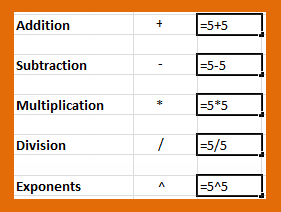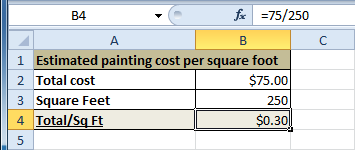Excel 2010
Creating Simple Formulas
Simple formulas
A formula is an equation that performs a calculation. Like a calculator, Excel can execute formulas that add, subtract, multiply, and divide.
One of the most useful features of Excel is its ability to calculate using a cell address to represent the value in a cell. This is called using a cell reference.
In order to maximize the capabilities of Excel, it is important to understand how to create simple formulas and use cell references.
Creating simple formulas
Excel uses standard operators for equations, such as a plus sign for addition (+), minus sign for subtraction (-), asterisk for multiplication (*), forward slash for division (/), and caret (^) for exponents.
The key thing to remember when writing formulas for Excel is that all formulas must begin with an equals sign (=). This is because the cell contains, or is equal to, the formula and its value.

To create a simple formula in Excel:
- Select the cell where the answer will appear (B4, for example).
 Selecting cell B4
Selecting cell B4 - Type the equals sign (=).
- Type in the formula you want Excel to calculate. For example, "75/250".
 Entering formula in B4
Entering formula in B4 - Press Enter. The formula will be calculated, and the value will be displayed in the cell.
 Result in B4
Result in B4
If the result of a formula is too large to be displayed in a cell, it may appear as pound signs (#######) instead of a value. This means that the column is not wide enough to display the cell content. Simply increase the column width to show the cell content.







